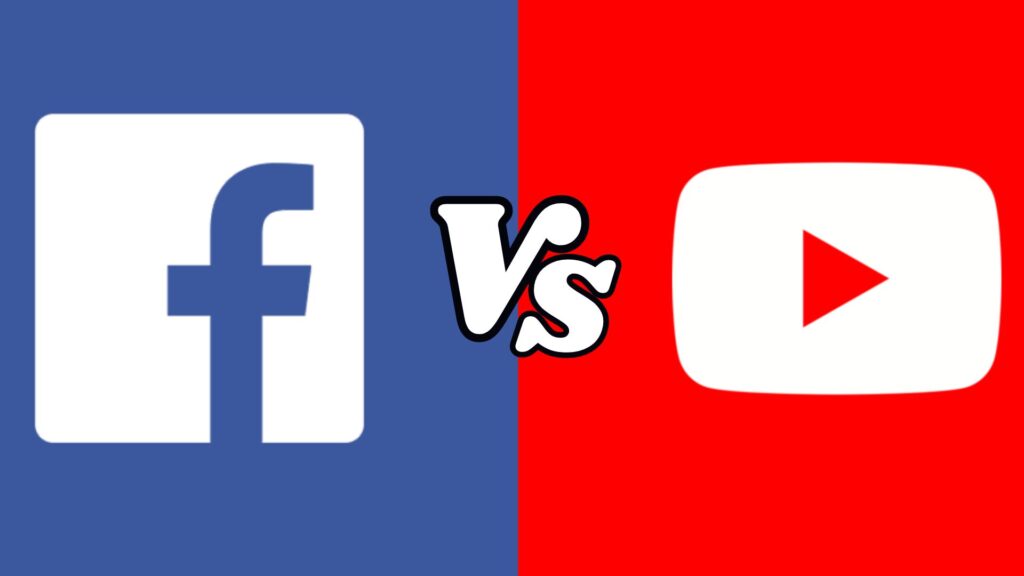In the ever-evolving landscape of digital marketing, social media platforms have become indispensable tools for brands and content creators alike. Among the giants of the social media realm, Facebook and YouTube stand out as two of the most influential platforms, each offering unique opportunities for engagement, visibility, and brand building. In this article, we’ll delve into the comparison Facebook vs YouTube, helping you determine which platform aligns best with your content strategy.
Understanding the Platforms
Before diving into the comparison, let’s take a closer look at what sets Facebook vs YouTube apart.
- Facebook: With over 2.8 billion monthly active users, Facebook reigns as the largest social media platform globally. It offers a diverse range of content formats, including text, images, videos, and live streams. Facebook’s algorithm prioritizes content that sparks engagement, encouraging interactions such as likes, comments, and shares. Additionally, Facebook provides robust advertising options, allowing brands to target specific demographics with precision.
- YouTube: As the second most visited website in the world, YouTube boasts over 2 billion logged-in monthly users. Unlike Facebook, YouTube is primarily a video-sharing platform, making it an ideal choice for creators focused on video content. YouTube’s algorithm is designed to surface videos based on relevance, watch time, and engagement metrics like likes, comments, and subscriptions. Creators can monetize their content through advertising, sponsorships, memberships, and merchandise sales.
Content Types
When considering Facebook vs. YouTube for your content strategy, it’s essential to assess the types of content each platform supports.
-
Facebook Content Types
- Text Posts: Ideal for sharing updates, thoughts, and brief messages.
- Image Posts: Engaging visuals can capture attention and convey messages effectively.
- Video Posts: Native video content performs well on Facebook, especially shorter, attention-grabbing videos.
- Live Streams: Live video broadcasts can foster real-time engagement and interaction with your audience.
-
YouTube Content Types
- Standard Videos: Longer-form video content, tutorials, vlogs, and entertainment.
- Live Streams: YouTube Live allows creators to stream live content to their audience, fostering real-time engagement.
- Shorts: Short-form vertical videos designed to capture attention quickly, similar to TikTok or Instagram Reels.
Audience Engagement
Both Facebook and YouTube offer opportunities for audience engagement, albeit through different mechanisms.
-
Facebook Engagement
- Likes, comments, and shares play a crucial role in boosting the visibility of content on Facebook.
- Groups and Pages provide dedicated spaces for communities to interact and engage around specific topics or interests.
- Messenger facilitates one-on-one conversations between brands and users, offering personalized engagement opportunities.
-
YouTube Engagement
- Likes, comments, and shares signal engagement and contribute to a video’s visibility within YouTube’s algorithm.
- Subscriptions enable users to stay updated on a creator’s latest content, fostering a loyal audience base.
- Community tab allows creators to share updates, polls, and exclusive content directly with their subscribers.
Monetization
For content creators looking to monetize their efforts, both Facebook and YouTube offer revenue-generating opportunities.
-
Facebook Monetization
- Ad Breaks: Creators can earn ad revenue by incorporating mid-roll ads into their videos, provided they meet eligibility criteria.
- Brand Collaborations: Sponsored content partnerships with brands can generate additional income for creators.
- Fan Subscriptions: Facebook offers a subscription model where fans can support creators through monthly payments in exchange for exclusive content and perks.
-
YouTube Monetization
- AdSense: Creators can monetize their videos through advertising revenue via the YouTube Partner Program.
- Channel Memberships: Viewers can become channel members for a monthly fee, gaining access to perks like badges, emojis, and exclusive content.
- Merchandise Shelf: YouTube allows creators to showcase and sell their merchandise directly below their videos, providing an additional revenue stream.
See Also – Can I Post to My Instagram Story From my Computer?
Conclusion
In the Facebook vs YouTube debate, the best platform for your content strategy ultimately depends on your goals, target audience, and the type of content you create. Facebook offers a diverse array of content formats and robust advertising options, making it ideal for brands seeking broad reach and engagement. On the other hand, YouTube shines as a video-centric platform, perfect for creators focused on long-form video content and building a dedicated subscriber base.
Ultimately, a well-rounded content strategy may involve leveraging both platforms to maximize your reach and engagement across different audience segments. By understanding the unique strengths and features of each platform and tailoring your content accordingly, you can create a compelling online presence that resonates with your audience and drives results.

